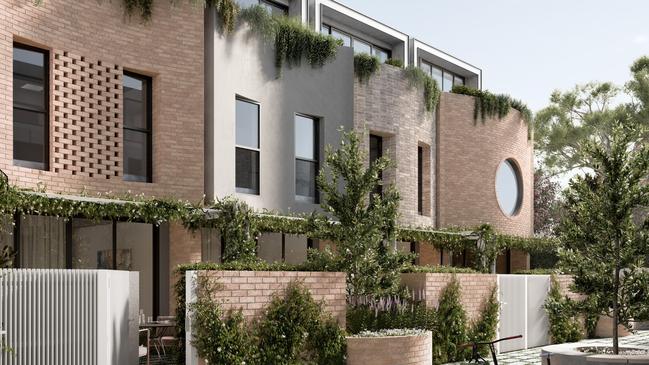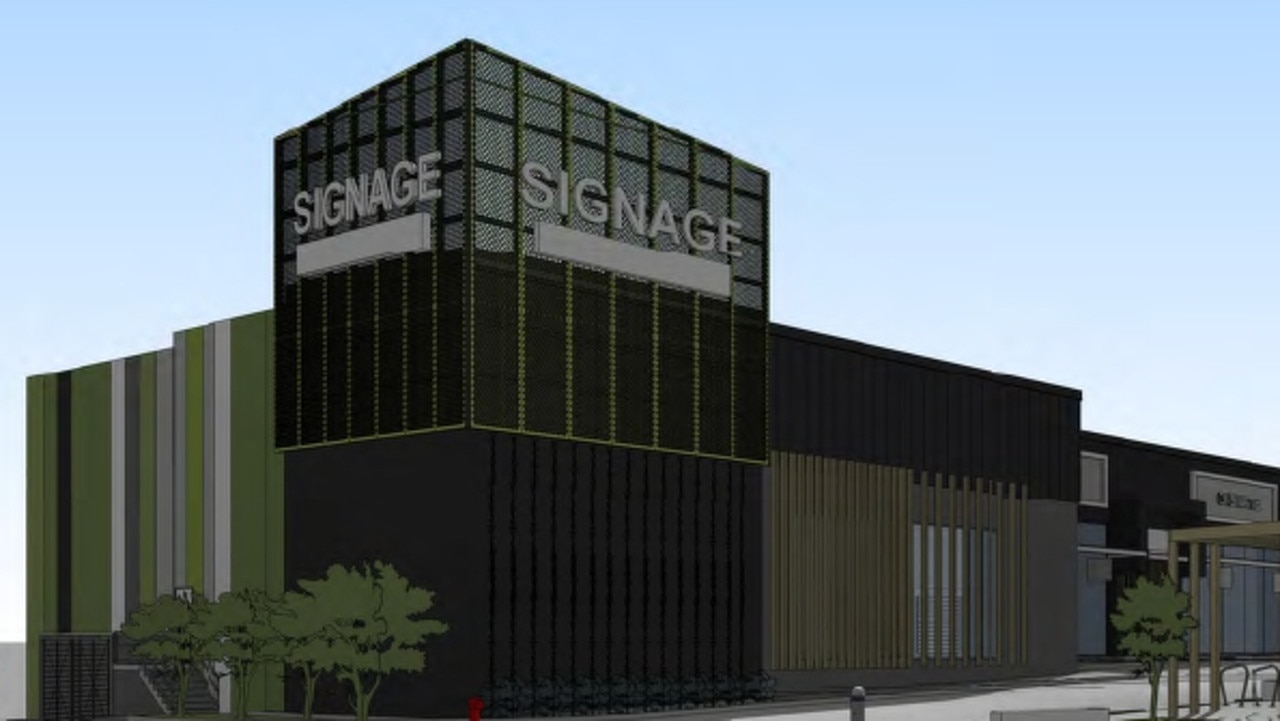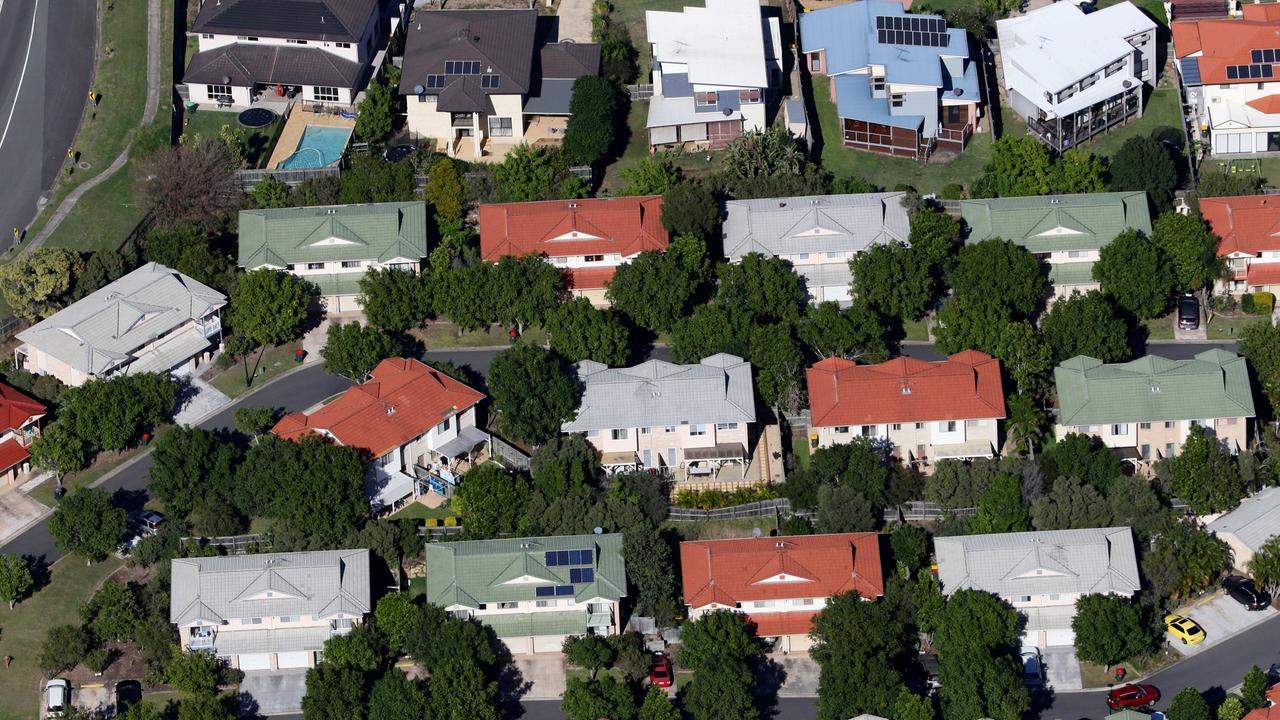Melbourne on track for wrong home boom, new housing forecasts reveal: Informed Decision
Melbourne is on track for a home building boom, just not where the government wants it. Now experts say the government will have to build homes itself and lure foreign investors back.

Property
Don't miss out on the headlines from Property. Followed categories will be added to My News.
One of the nation’s most respected demographic groups have projected a more than 154,000 new home building boom for Melbourne across the next five years.
But it won’t be enough to change housing affordability and will leave more kids living with their parents for longer and more Victorians living in share houses.
With 72,000 of the homes (47 per cent) tipped to be built from 20km-40km from the CBD, they’re not going to be built where the state government wants them and the numbers are well short of the 80,000 a year needed to be built across Victoria to reach ambitious new housing construction targets from both state and federal governments.
RELATED: ‘Rental catastrophe’: Victoria’s vacancy rate plunges to a record low
Australia’s bold population forecast has grim home truth: Informed Decision
Melbourne home prices rise in October, but banks gobble up most of the profits
Informed Decision’s (.id) forecasts also anticipate an increase in household sizes, with more sharehouse arrangements and kids living with their parents longer.
Industry groups have warned the government now needs to “throw the kitchen sink” at housing affordability if they want to reverse the forecast, with tweaks to stamp duty, government-led development and efforts to entice foreign investors back into the state’s housing market all necessary.
There are also questions over the Victorian government’s plan to swap the state from its current 50-50 split between developing new homes in established areas and those around the city’s fringe, to a 70-30 blend with the bulk being done in existing suburbs.


Surging costs for the pipes and roads that go with new estates is part of the motivation, with Infrastructure Victoria calculating civil works on the fringes are 2-4 times more expensive than in established suburbs. Past estimates by the government agency have pegged the infrastructure cost per dwelling as high as $214,000, compared to a $160,800 top-line figure for new homes in established areas, but it is likely to be significantly higher with building costs skyrocketing in recent years.
The Informed Decision modelling shows just 50,000, less than a third, of expected Melbourne builds will be built within 10km of the CBD in the next five years.
It’s less than the 80,000 new homes needed to be built each year for the next decade to reach the state’s new 800,000 homes in 10 years target.
Informed Decision chief executive Lailani Burra said the forecasts were based on the availability of land and today’s policies and population trends for both birthrates and immigration.

“In Melbourne there’s enough land, but getting housing built is the problem,” Ms Burra said.
“Even so, in our model we are having to increase average household size and we will have to make better use of existing homes.
“But the biggest thing we are pointing out in our forecast is that at the moment we are not building at a rate that would improve affordability.”
Ms Burra said the government might have to make the first move, particularly in the middle ring, as lenders were unlikely to back denser building in areas where the government wanted them until developers had a proof of concept.
“Government land development would take the risk and show the way and that there’s a market there,” Ms Burra said.
Property Council of Australia Victorian executive director Cath Evans said the Housing Statement had provided several strategies to deliver denser suburban housing, but were still to be finalised.

“There are other fundamental challenges to the development of new homes in established areas too,” Ms Evans said.
“Australian Bureau of Statistics data shows development costs for apartments are increasing at significantly higher rates than costs for other types of housing. If we want to deliver more housing more affordably in established areas, we need to examine more than planning – we need to examine taxation too, including the impact of foreign investor charges and reintroducing concessions for off-the-plan purchases to support project feasibility.”
Across the first six months of this year, ABS stats show the average cost to build an apartment in Victoria was more than $538,000. The typical house cost just $468,000.

Urban Development Institute of Australia Victorian chief executive Linda Allison said it would take years to switch from today’s 50-50 development levels to the government’s desired 70-30 model, but now was the time to “throw the kitchen sink” at housing affordability.
Ms Allison added that with $500m in unspent Growth Area Infrastructure Contribution funds currently sitting in “government bank accounts” there was plenty of room to spend on providing infrastructure to city fringe developments, which would be vital as a certain segment of the population would always choose a new house and land package over an apartment.
“We need to have some substantial policy changes, and that means releasing more land in the greenfields as that’s where we can get more housing out of the ground at present,” Ms Allison said.
“And we need to have some levers pulled with regards to taxes to achieve this. The current stamp duty rates need to be looked at, particularly for foreign purchaser duties — that is a hand break on investors to come in and help to get those developments out of the ground.”

While Informed Decision’s modelling is used by many of the state’s local councils and government bodies, the state government has its own modelling through the Victoria in Future 2023.
They are expected to discuss local government area targets with councils in the near future, but have yet to confirm if that will occur this year or next.
Community stakeholders will be spoken to after local councils.
A Victorian government spokeswoman this week said they were expecting Melbourne’s population to equal London’s by the 2050s and their 800,000 homes target for the next decade must be reached.
“The status quo is not an option,” they said.
“We’re preparing an ambitious plan for Victoria that will set out how we’ll reach our target for 70 per cent of new homes to be built in established areas, near transport, jobs and services, while making sure growth areas deliver 30 per cent of new homes.”
Their strategies include building 9000 homes on 45 government sites across the state and fast-tracking planning in key activity centres.

Castran off-the-plan home sales specialist Dominic Ziino said there were examples of quality developments already being built in Melbourne’s suburbs.
Mr Ziino pointed to a project at 88 Bastings St, Northcote, where 47 townhouses are being built on a 6000sq m site.
With basement parking, homes will range from two to three stories tall, and had already scrapped gas connections before the government announced a ban on them in new homes to start next year.
Mr Ziino said while the project had been delayed for six months in VCAT, since being approved there had only been one complaint made about it.
Sign up to the Herald Sun Weekly Real Estate Update. Click here to get the latest Victorian property market news delivered direct to your inbox.
MORE: What you can do after 13th rate rise
The Block auctions highlight massive real estate problem
Rent and cost of living crisis: Melburnians turn to shared accommodation in spades


